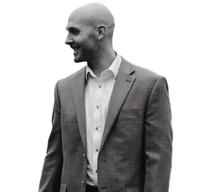
Getting New Clients as a Personal Trainer

Getting Your First Personal Training Client
TrulyFIt
Getting your first client is tough. This fitness business platform has taken this very difficult problem and solved it for fitness professionals. You can start your fitness career without having to be an expert in marketing or advertising. If you’re looking for your first client or just more clients TrulyFit can help.
TrulyFit allows you to build a trainer profile for free on the platform, list your services, schedule, and set your prices. Hot leads, yes, potential clients will be searching through the site to find you whether you run your business on-site or virtually. Whether you’re an in person or online personal trainer this open marketplace allows for various levels of fitness professionals to set their price accordingly. TrulyFit advertises to get these customers to the site on your behalf. Sign up today!
Strategies For Getting & Keeping Clients
Understanding Demographic of Purchasers:
The people who are willing to pay for your services are the people who need to be targeting when you start. Until you have established yourself as an absolute authority in your realm/niche, you will have trouble persuading people to purchase. Getting new clients for new trainers is even harder.
Proven purchasers in the health and fitness industry are the following; working professionals (34+), personal interactions, and retirees. In a study done by IHRSA, a whopping 71% of the recorded club/gym personal training fees were paid for by people over the age of 34.
As a FIT (Fitness Industry Teacher) your goal is to provide value for your clientele. Subsequently, the pay must be commensurate with the value you provide.
If the going rate in your area for a personal training session is $60/H, and you believe you are providing $60/H worth of value, who is now likely to be able to pay for that?
2 Questions To Always Ask
- Who has the funds to pay an expert?
- Statistics taken from Deloitte Insights review, saw that nearly 20% of baby boomers have investable assets over half a million dollars, and over 35% have more than $50k in deposits.
- Who is likely to seek out an expert?
- You do not create a market, you find out what the market dictates and you adjust accordingly. The people likely to seek out an expert? We will go over that next.
What Clients Are Easier To Get?
How many 22 year old exercisers have 60/H to pay a personal trainer?
How many 24 year old exercisers are likely to be nervous about transitioning from downward dog into warrior 1 pose?
The older you are the more prone to injury/health related problems you are, and in turn the more you’ll need a professional to guide you. This is not just a pitch to your prospective clientele as a fitness industry teacher, but truly a fact of life.
It becomes increasingly difficult to lose weight, get stronger, and be creative in the exercise/health/fitness realm as you get older. You lose balance, motor coordination, strength, bone density, stamina all while increasing the fear of falling and obtaining life altering health issues & illnesses.
So, start to think about who needs your expertise.
- A 67 year old woman who was just diagnosed with osteopenia
- A 27 year old female who wants to go from 123 pounds to 115 pounds for a wedding
You can certainly help both, but the former will stick with you on a weekly basis. The older demographic are typically more financially secure, and less likely to take your tips for one session then go use them on their own.
If building quickly is your goal finding older clientele is always my advice.
Be Professional: Keep Clients Happy
It doesn’t matter how fast you get clients if you continue to lose them. You have to do the right things day to day or you will lose them faster than you gain them.
While on vacation in Miami, I was getting a personal morning lift in at a local gym. I could not help but to glance over at other trainers to see what sort of experience they were providing.
There were only two trainers working at the time in a relatively small gym. Both trainers were not doing the right things to keep clients happy. I can tell they probably never had a personal training internship or shadowing experiences.
How Not To Get Clients
For the sake of this story I will call them Trainer Blonde and Trainer Brown. Trainer Brown’s client was on the treadmill as he strolled in at 8:21am. Her eyes rolled and a half smirk arose over her face as he slowly walked toward her apologizing. “The line was super long at Starbucks, my bad”, sipping his coffee. After already arriving late, with a coffee in his hand, he then proceeded to ask his client, “What do you want to do today?”.
Trainer Blonde was across the room working with his client, a women in fabulous shape somewhere in her early 40’s. Trainer Blonde is having her do dumbbell deadlifts. He doesn’t instruct form or tell her how many repetitions to do. Instead he asks, “Can I film you when you do these it will be great for my website?”
If getting new clients is the goal you will have to clean up your training style. Understand people are always watching. Most of this boils down to one thing: The Golden Rule.
People are paying money for your time and expertise, you have to treat them as you would expect to be treated. I will go over a simple list next to keep you focused on creating a positive experience for each client.
6 Daily Musts To Maintain Clients
- Be early, not on time – Other potential clientele are always watching, always. At least half of my clientele had watched me work in some capacity from afar or were told via word of mouth about my professionalism prior to working with me. You are a professional. Don’t ever be late.
- Additionally, you need to assess the layout. Whether you’re teaching an online class or working one on one with someone outdoors, showing up early allows you to see what equipment is available. It also allows you to see any issues there may be with the facility (Air Conditioner out, treadmills broken, etc), and it allows you to make any last second adjustments in your plans so that any curveballs that may be thrown your way do not cripple your ability to put together a good experience.
- Imagine if I asked you to put together a routine for me (any fitness medium) using 3 different items in a place you are familiar with. Now, Imagine I dragged you into my facility and asked you to do the same thing. You will spend half of your time looking around the space to find items you thought of in your head that you had exercises for. It makes you look unprofessional and shakes your confidence. Understanding the space around you is a must, and being early allows that. Thinking on the fly and being creative is important and inevitable, but having one leg up will make that easier.
- Ask your client how they feel – I call this the “Update”. This should be the first question you ask always. You need to check in with them physically and emotionally. Letting them vent for the first few minutes of every session gives you solid direction as to what type of experience you may need to provide, or what exercises you should avoid.
- For Example, what if your client tells you they worked out on their own, and ran 12 miles the day before? Well, it may not be best to structure your workout around leg exercises that day. You may need to reassess your game plan, and put together a lighter workout focusing on upper body, core, coupled with dynamic and static stretching.
- Be prepared to get a host of different responses. “I didn’t sleep well last night”, “I have had some stomach issues”, “My gout is flaring up”, etc. You have to be ready to pivot and adjust to their needs. It also allows you to go over their goals, and reiterate that you know where they want to be and you’re helping them stay on track.
- Come Prepared – Have a written out game plan or at least a vague idea of what you want to do in your head.
- Yes, they are paying for the session and you should provide them with whatever services they specifically ask for. That doesn’t let you off the hook from coming prepared, and emphasizing that you are the FIT (fitness industry teacher) with the tools that are helping them toward their goals. Using online forums is something I highly suggest as a resource to pull great exercises from. Of course you should always take anonymous online posts with a grain of salt, but there is a lot of great information and routines you can pull from to help guide you when writing out a plan.
- Demonstrate & Elucidate – Your ability to demonstrate and elucidate need to be on display continually. For a few of the same reasons I have previously mentioned; prospective clients are always watching and you need to illustrate that you are an authority and expert in your realm. It is also the safest, and easiest way for your client to learn properly. Whether they are visual or auditory, you are covering both bases as far as proper form is concerned.
- People also like to see things done with ease, in an impressive manner. They should be enamored by your skill set in showing the movements, which reemphasizes why they are paying you. You should also be elucidating the “why” for movements, so that you again show there is a purpose and a plan, additionally illustrating your ultimate understanding of the fitness subject. People learn in a variety of ways. You have to learn to be adept in explaining the same thing in various ways. For example; when putting my client into position for a rotational exercise I have different terminology I will use until something clicks. I may say, “Get into an athletic stance” if that isn’t enough I can get more specific and say, “Pretend you are playing second base and anticipating a ground ball”. Understand that what is easy and normal terminology for you will not be for your clients. Be ready to try different phrases, analogies, and visual stimuli.
- People Learn Differently – It is your job to be good at presenting things in different ways until the client understands. You must use different visual cues outside of anatomical parlance in order to get people to understand the movements and connect the dots.
- For example; When describing the kinetic chain progression of a squat it is typically much easier to say, “There is a door open behind you I want you to pretend you are going to push the door closed with your butt before you start your squat” rather than “Hip hinge backwards into an anterior pelvic tilt position”. Remember that your clients do not understand (nor care) about all the specifics, and rely on you to put them into the proper positions by relaying that information to them in whatever way is easiest to process for them. Many times you will have to demonstrate each movement as some people learn from the visual stimuli. Have at least 3 ways of demonstrating or describing each of the 7 Central Movements (which you will learn shortly).
- Quick & Confident – You know that feeling when you’re about to watch someone in a horror film walk into the room where the killer is? I get that same wide-eyed discomfort when I watch trainers drag their clients around a fitness facility, aimlessly looking for an idea or an exercise to pop into their heads.
- The equipment isn’t instructing you what to do, you’re using the equipment to help instruct your client. If your internal monologue is always churning from an anatomical perspective, “We’ve worked legs, core, and pulling…okay lets do pushing next” then you can be proactive in getting to the next exercise swiftly and confidently to show your client you have a plan. Once you understand the “7 Central”, which we will go over next, you should never have an issue with this.




